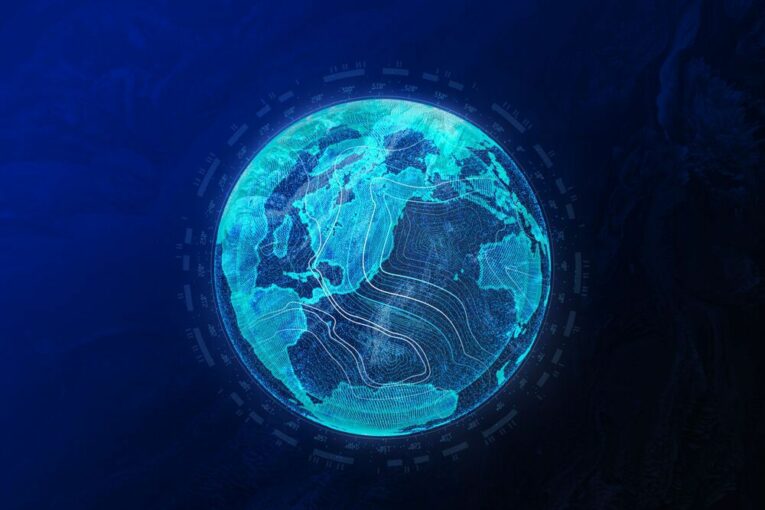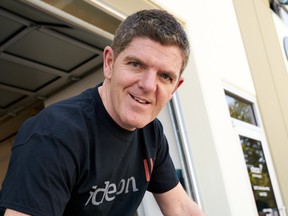
A Vancouver-based company, with support from the government, says it is ready to commercialize a technology that harnesses invisible cosmic rays to stare deep into the earth and identify where the richest mineral and metal deposits are located.
Called “the world’s first Earth X-ray discovery platform,” Canada’s Digital Technology Supercluster announced in November it had invested $5.6 million in a group of companies, led by Vancouver’s Ideon Technologies, trying to pioneer muon tomography. At a basic level that means studying the path of subatomic particles emitted by cosmic rays, which are known as muons, in order to glean insight about the geology of the earth.
If successful, Ideon says it can provide an image of the earth, up to one kilometres deep, that’s similar to an X-ray or an MRI, which mining companies could use to help identify untapped metal and mineral deposits located far below the surface.
“It sounds far fetched but the science is decades of understanding,” Gary Agnew, chief executive and co-founder of Ideon, told the Financial Post.
The digital supercluster, based in British Columbia, is part of a $950-million initiative the federal government launched in 2018 to nurture Canadian industrial innovation.
Ideon says that after millennia of mining, humans have discovered all the obvious near-surface mineral and metal deposits, and so now geologists have to probe deep within the earth’s surface.
It sounds far fetched but the science is decades of understanding
Gary Agnew
That’s where its technology can be useful: Instead of blindly drilling into the earth in search of ore deposits, mining companies can use its muon tomography to obtain a rough sense of the geologic densities in an area and more precisely choose where they drill.
Mining companies still need to drill into the earth to remove core samples that confirm their geologic suspicions about an ore deposit. But Agnew said his technology can reduce the amount of drilling, which means less expense, and also importantly, less emissions since drill rigs generally operate on diesel fuel.
Many mining companies, such as Teck Resources Ltd., Barrick Gold Corp. and others have set a target to reach net zero emissions in the coming decades and will look to reduce reliance on diesel in coming years. For example, Agnico Eagle Mines Ltd. said diesel consumption represents the largest source of greenhouse gas emissions, but much of this presumably comes from large diesel mining haul trucks and other heavy machinery, not necessarily drill rigs for exploration.
Although there are no precise estimates of emissions related to drilling, mining companies spend billions of dollars per year on exploration. In 2021, global exploration budgets increased 35 per cent to $11.2 billion, with $2.1 billion budgeted for exploration in Canada, according to S&P Global Market Intelligence, which tracks the mining industry’s capital expenditures.
Agnew says about 55 per cent of any company’s exploration budget generally is allocated for drilling. Globally, he estimated that amounts to about $6 billion or 40 million metres per year, he said.
“We can help reduce the amount of drilling,” said Agnew, “or dramatically increase the field of view.”

Ideon was founded in March 2020 — “the week the world shut down” as Agnew put it — and emerged out of Vancouver-based Triumf, Canada’s national particle accelerator lab, which counts a number of Canadian universities as partners.
The idea took seed when a geologist in Saskatchewan once asked Triumf if muon tomography could be used for mineral exploration — scientists affiliated with the lab have been developing the technology ever since.
While Agnew spent most of his career at Finning International Inc., the world’s largest dealer of Caterpillar machinery, his co-founder Doug Schouten, who’s also Ideon’s chief technology officer, holds a PhD in subatomic physics from Simon Fraser University.
The company also sees opportunities to help oil and gas companies with exploration, but its marketing casts the company as focused on the critical minerals supply chain and finding the metals necessary for the energy transition.
BHP Plc., Teck Resources and smaller junior exploration outfits have experimented with the technology or agreed to do so.
Ideon received $3.7 million under the digital supercluster investment, while its client, junior explorer Fireweed Zinc Ltd., which is exploring a zinc-lead-silver deposit in the Yukon, received $1.2 million. Dias Geophysical, a Saskatoon-based company that conducts magnetic gradient surveys, received the remaining nearly $600,000 to help advance the technology further.
Industry also co-invested nearly $7 million and Mitacs, a national research organization that operates research and training programs in industrial and social innovation, is investing $345,000 to support a team of post-doctoral researchers at Simon Fraser University.
“This project is almost like Star Trek, being able to do scans of the earth with muons,” said John Weigelt, national technology officer for Microsoft Canada, which is supplying cloud computing credits to the project.
The company charges a monthly fee for its services, which can range from $50,000 to $100,000, depending on the size of the campaign, which can take weeks or months depending on the size of the deposit and the geology.
Over the past 18 months, the company has raised about $3.1 million and its investors include the UBC Seed Fund, Mineral & Financial out of London, the Sprout Fund in Edmonton, WUTIF Capital in Vancouver, Highstreet Ventures, and Don Bell, co-founder of WestJet, according to Agnew. The company will look to raise more money in 2022.
Financial Post
• Email: [email protected] | Twitter: GabeFriedz
You can read more of the news on source
